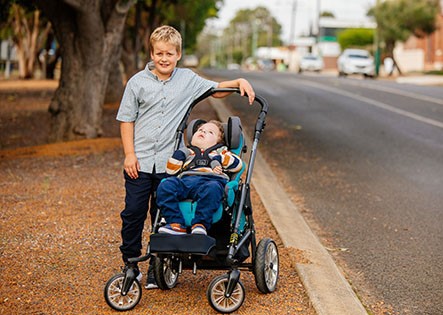Healthy and connected

Physical and mental health, as well as connection to culture and community are critical to a child or young person’s wellbeing.
In the Speaking Out Survey, students in Years 4 to 12 answered questions about their physical health and activity, their mental wellbeing, resilience, stress and use of alcohol and drugs, as well as their cultural background, activities outside of school and their access to support.
Here are the key findings.
Healthy and connected
Physical and mental health
- 15% of students in Years 4–12 rated their health as fair or poor. This was highest for Year 10–12 students, 21% said their health was fair or poor.
- 1-in-4 high school students in mainstream education say they have a long-term health problem and 1-in-10 say they have a long-term disability.
- 29% of Year 10–12 students report getting less than eight hours of sleep.
- Male high school students are significantly more likely than female students to eat regular meals every day.
- 2-in-3 female high school students do not eat breakfast every day.
- 1-in-4 Year 10–12 students do not eat fruit every day and almost 1-in-5 do not eat vegetables every day.
- More than 1-in-4 female Year 7–12 students worry a lot about their weight as do 1-in-10 male students.
- 45% of female high school students reported high life satisfaction compared with 65% of male students. One-quarter (26%) of female students reported poor life satisfaction.
- Most students feel resilient but 10% of female students and 5% of male students say they cannot achieve their goals or cope with life’s challenges.
- School and study problems are the single most common source of stress for students in Years 9–12, with 9-in-10 students affected.
- Body image is a source of stress for 2-in-3 female students in Years 9–12.
- Younger students and male students overall are more likely to have a positive view of themselves.
- 3-in-5 female and 4-in-5 male high school students say they feel good about themselves.
- 58% of Year 9–12 students reported they had felt sad, blue or depressed for two or more weeks in a row in the last 12 months.
Healthy behaviours
- 26% of high school students reported learning nothing at school about marijuana and 17% reported learning nothing about other illegal drugs.
- 3-in-4 high school students think people their age should not use alcohol or drugs.
- Among Year 10–12 students, 1-in-3 think it is okay for people their age to drink alcohol and 1-in-4 think it is okay to use marijuana.
- 30% of high school students either aren’t sure or don’t know where to go for help about alcohol or drugs.
- 80% of Year 7–9 students and 42% of Year 10–12 students have never tried alcohol.
- One-half of Year 10–12 students who had ever drunk alcohol reported having drunk alcohol in the last four weeks.
- 91% of Year 7–9 students and 69% of Year 10–12 students have never tried cigarette smoking.
- 4% of Year 10–12 students smoke once a week or more.
- Among Year 9–12 students, 25% have experiences with marijuana and 15% with other illegal drugs.
- 1-in-3 Year 10–12 students feel they don’t know enough about sexual health and pregnancy or they aren’t sure.
- 2-in-5 Year 7–12 students either don’t know or aren’t sure where to go if they needed help for something about their reproductive or sexual health.
- 56% of female and 30% of male Year 9–12 students have been sent unwanted sexual material.
Feeling connected to culture and community
- 19% of Year 4–12 students were born overseas and 20% speak language(s) other than English at home (5% exclusively).
- Most students spend time with friends outside of school at least once a week but 1-in-5 do this hardly ever or never and this proportion remained the same across year groups.
- 25% of female and 13% of male Year 10–12 students hardly ever or never practise or play a sport.
- More than 1-in-2 male and 1-in-3 female students play electronic games every day or almost every day.
- One-half of Year 10–12 students do not read books in their leisure time.
- Most Year 4–6 students spend time hanging out with family, reading books, doing homework and watching TV every day.
- Most Year 7–12 students spend time using the internet, hanging out with family and helping with housework every day.
- 1-in-2 female and 2-in-3 male high school students feel like they belong in their community.
- 14% of high school students often go without eating or sleeping because of their mobile phone, especially girls (17%).
- Two-thirds of students do not feel able to access health support because they feel embarrassed or ashamed.
- 40% of female and 30% of male students reported getting help for mental health worries in the last 12 months.
- 2-in-3 young people approached family and friends and 1-in-3 turned to doctors and/or to school services for mental health support.
Speaking Out Survey 2021 - Summary report
pdf 7MB
Download pdf



